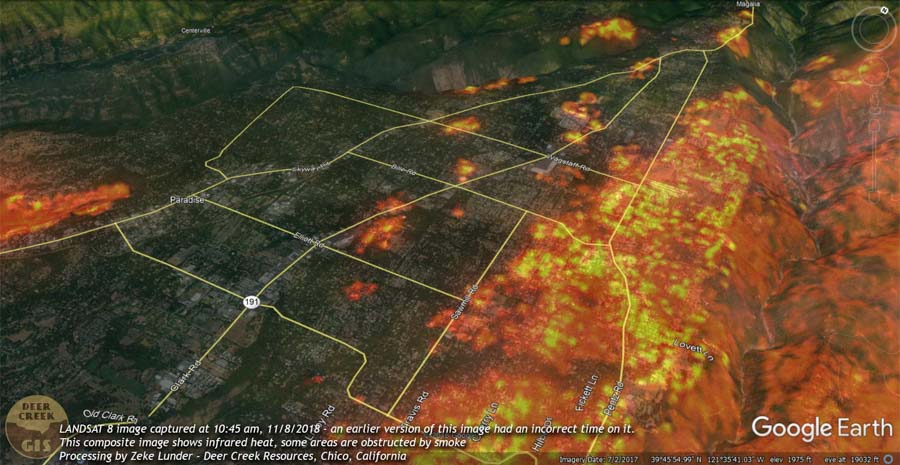
Analysts studying the aftermath of the Camp Fire which destroyed much of Paradise, California found that homes built to fire-safe standards had a much higher survival rate than those that were not.
Beginning in 2008 new construction in the city was required to follow a standard, known as the 7A Code, designed for the state’s areas at high risk from wildfire, requiring fire-resistant roofs, siding and other safeguards. Fifty-one percent of the homes built under the 7A code survived, while only eighteen percent of those built before 2008 did.
While this would seem like an easy lesson to learn, some areas in the state are reluctant to apply the fire-safe standard.
Below is an excerpt from an editorial at the Sacramento Bee:
“…As many as 3 million homes stand in what the state calls “very high fire hazard severity zones,” according to Cal Fire. These areas, where the climate and the presence of combustible foliage can lead to tinderbox conditions, are destined to burn. The data on which homes survived the Camp Fire should be a call to action for every city in the danger zones.
“Unfortunately, short-term thinking can triumph over common sense. Cities facing severe fire risks can avoid compliance with the fire-resistant building codes, or choose to avoid their obvious advantages, despite the fact that “a new home built to wildfire-resistant codes can be constructed for roughly the same cost as a typical home,” according to a report by Headwaters Economics.
“Take Santa Rosa’s Coffey Park neighborhood, where the Tubbs Fire killed five people and destroyed 1,321 homes in 2017. The neighborhood wasn’t considered a fire hazard zone, unlike some other areas of Santa Rosa. The Tubbs Fire proved otherwise, but Coffey Park still isn’t designated as a “very high fire hazard zone” by Cal Fire.
“ ‘City officials are OK with that,” according to The Bee. “Although developers rebuilding Coffey Park are being urged to consider fire-resistant materials, city spokeswoman Adriane Mertens said the city doesn’t see any reason to impose the 7A code in the neighborhood.’ “

I had dinner with a Santa Rosa City Council member while the Tubbs Fire was still burning specifically to discuss adoption of a redrawn WUI boundary to encompass Coffey Park, which would trigger chapter 7A building code requirements there. He seemed enthusiastic. Guess it didn’t sink in.
One important question, why would any homeowner want to rebuild without fire-safe practices? Does one want to lose everything again, go through the same ordeal, agony? Never mind the sheer foolish, absurd behavior by officials not adhering nor enforcing the updated standards.
Having a fire safe home is not that more expensive than one that is not. Why is any bank or insurance company approving any home to be built that doesn’t adhere to fire safe practices.
As Chris said above, this practice is continued in flood plains, and I’ll add tornado alleys, and hurricane prone areas.
We, as the government taxpayers should not have to continue to support these practices.
How many more homes would have survived if they weren’t built 4, 5 and 6 homes to the acre?
And we constantly rebuild homes in floodplains.
Lessons not learned.
My only reaction… insanity… Doing the same thing and expecting a different result.
This is stupidity they need to be required to meet current standards or the cycle will continue
Foolish practice by city managers when the evidence is obvious.